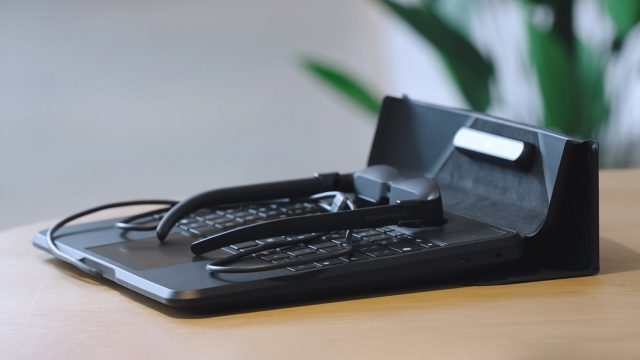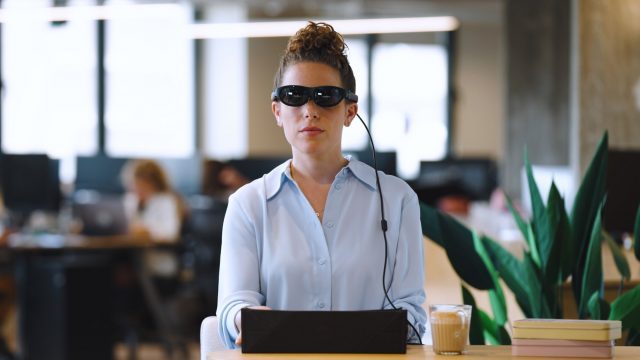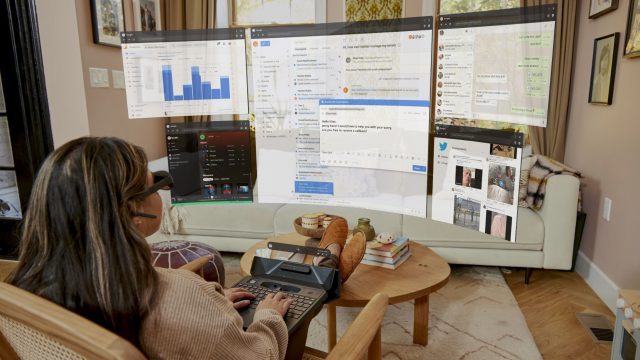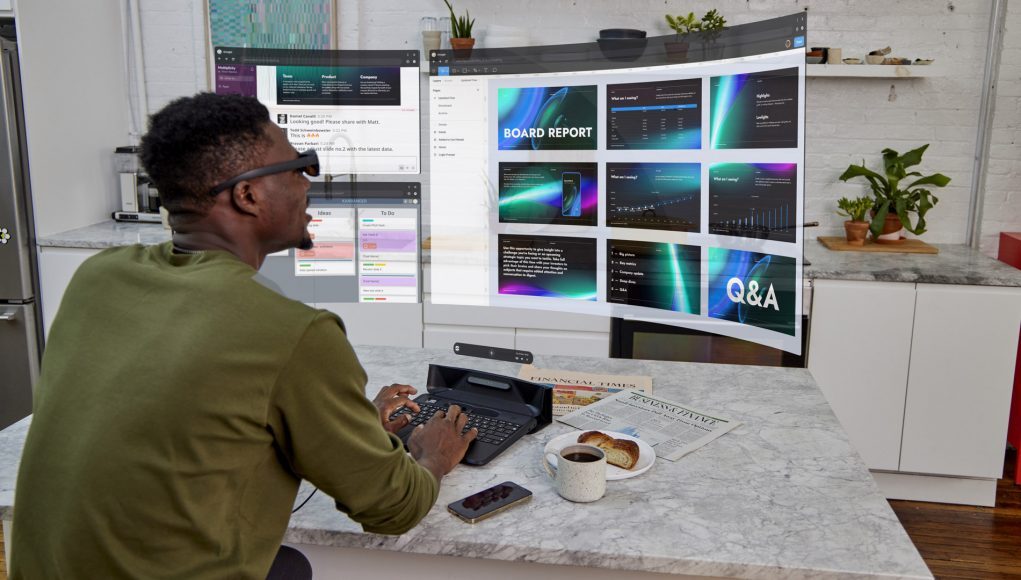First it was the desktop. Then the laptop. And now, the… spacetop? That’s the category that Sightful hopes to carve out with its new “augmented reality laptop” which combines a pair of augmented reality glasses with a keyboard, allowing you to put a huge virtual desktop in your backpack.
Stealth startup Sightful today revealed Spacetop, an “augmented reality laptop” that turns a pair of AR goggles into a large virtual desktop computing environment. The company announced that it is soliciting interest for those who would like to be part of the product’s early access launch, which will cost $2,000 for the complete Spacetop computer. Purportedly only 1,000 units will be available at the outset, with shipments beginning this July.
Sightful, which was previously called Multinarity, says it has raised $61 million in funding to date, with its lead investors being Corner Ventures and Aleph Capital.
While we’ve seen many other ‘virtual desktop’ applications in the PC VR and standalone space, Sightful is trying to close the loop on making virtual desktop productivity… well, actually productive.

The company is hoping its all-in-one product—which essentially consists of the bottom half of a laptop, a pair of tethered AR goggles, and a custom software environment—will make for a streamlined virtual desktop experience that’s easy to use. Spacetop has a sort of dock in which to stow the glasses, and a ‘lid’, allowing the entire unit to be portable.

Sightful says Spacetop uses a pair of customized Nreal Light AR goggles with 6DOF head-tracking, a 53° field-of-view, and 1,920 × 1,080 resolution per-eye.
Inside the Spacetop base (which includes a full keyboard, trackpad, and USB & DisplayPort ports) is a Qualcomm Snapdragon 865 processor, 8GB of RAM, 256GB of storage, along with enough battery for a claimed 5 hours of work. There’s even a built-in webcam for video calls (though you might look a little strange wearing sunglasses with a cord coming out of them while you’re on video).

And yes, you read that right; with a Snapdragon processor this won’t be running Windows but rather the company’s own ‘Spacetop OS’, which we presume is built atop Android, though the company hasn’t said anything about compatibility with Android applications; instead it seems the first version of Spacetop will run almost exclusively on web apps, providing an essentially unlimited virtual desktop upon which to place them.
If you’ve ever used a Chromebook, you’ll know that you can actually get quite a bit done these days operating purely on web apps, but anyone hoping for serious desktop productivity and applications like Photoshop, Illustrator, or Blender, you won’t see them on Spacetop any time soon.
For what it’s worth, the company isn’t trying to hide that fact.
“Sightful is encouraging people who love to be first and look into the future, who work on the go, who live largely in Web apps to come and purchase […] Spacetop,” the company says in its announcement. “Potential customers looking for a hard-core gaming rig or a video-editing monster machine would be better served to wait for a future generation.”

The company also says at this point it isn’t focused on leveraging the unique 3D or spatial capabilities that come with AR (no 3D models floating in the air in front of you), nor are they working on any novel inputs (no special gestures to move windows with your hands); all of which is a good idea in my book—its good to walk before you run.
While Spacetop’s focused features and all-in-one design may have some benefits for virtual desktop productivity, the key challenges to unlocking this use-case are about more than just about creating a dedicated software environment and packaging everything together.
Over the years I’ve tried countless variations of XR headsets and virtual desktop software, including using them with a dedicated keyboard, mouse, and even a full Mac and Windows environments. Despite having all of the actual computing power and features I need for my daily workflow, core issues relating to the displays remain; notably: field-of-view, resolution, sweet spot, and comfort.
While the Nreal goggles aren’t terribly heavy, their relatively tiny field-of-view is in direct conflict with the idea of having a massive virtual desktop ready whenever you go. Instead of rotating your head and eyes just a bit to see one monitor or the other with real side-by-side monitors, you’ll need to move your head way more to bring a comparatively sized virtual window ‘into frame’, which can become uncomfortable quickly.
This issue is often amplified by a small sweet spot on many headsets which means that as you rotate your eyes the display becomes blurrier at the edges, meaning you need to nearly center your entire head on any window you want to see at maximum fidelity.
And considering the Nreal goggles use transparent displays, this makes resolution and legibility a challenge because the windows floating in front of you will always have some level of transparency.
As someone who has tried many similar solutions over the years, the pros have yet to outweigh the cons. I don’t personally see Spacetop (or for that matter, any virtual desktop application) catching on in a big way until it’s capable of essentially a perfect replication of a basic 1080p laptop display as it would look in real life right in front of you, let alone an unlimited virtual desktop with a plethora of application windows floating around you.







